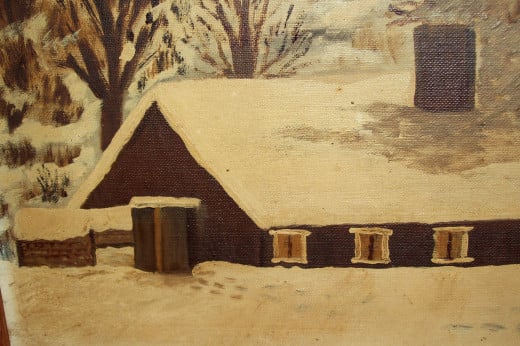MAPLE SYRUP AT ITS BEST

Sweet Aroma
The sweet aroma of boiling sap is in the air. It is the time of year when Maple syrup is made. Nothing can match the taste of Maple syrup fresh from the sugar bush. A sugar bush is a group of Maple trees used for harvesting sweet sap. Boiling Maple sap down into syrup has been practiced for centuries. It is believed that the Native Americans showed the settlers how to use it for cooking.
The maple season runs from February-April for about six weeks depending largely on the weather for that year. It takes freezing temperatures at night and a warm sunny day to make the sap run. Some days sap will run more than on other days. It takes forty gallons of sap to make one gallon of maple syrup. Sap is a clear fluid which looks much like water only sweet. Several trees may be needed depending on how much you plan to produce. The average tree can produce enough sap to make a little over a quart of syrup.
Tap Trees
First you will need to tap your trees. You will need spiels (spouts) to do this. Many hardware stores or tractor supply companies carry these items. Drill a hole in the trunk of the tree and screw in the spiel. A slight tap with a hammer is sometimes needed. The hook on the end of the spiel is made to hold a pail to catch the sap. It is a good idea to also have a lid on the pail to prevent any foreign materials from getting in the sap. Depending on the size of the trunk it could hold more than one spiel and pail. Be sure you can identify your Maple tree before tapping. If you are tapping any other kind of tree the sap could be toxic. It may be a good idea to locate your Maple trees while the leaves are still on them. The sap is only usable until the tree starts to bud. After the season is done all spiels should be pulled out of the trunk. Sap only flows from that tap one season. A hole will need to be in a new location for another year’s tapping as the tree will seal itself closed. Maple tree varieties are Sugar, Black, Red, and Silver. Most producers prefer the Sugar Maple because it generally produces a sweeter sap and buds later than the others.
Gather Sap
Next is time to gather the sap. Large plastic drums work well for this hauled on a wagon or truck. Places that are not assessable by vehicle will need to be carried out on foot. This is why so many modern day syrup producers use plastic tubing that can flow into storage tanks or directly to their processing area. The sap containers should be clean and made of food grade material. The sap should be filtered though a cheesecloth to rid foreign objects. Sap will not keep for more than a couple days. It should be collected every day. The sap needs to be kept cold so it does not spoil. It usually can be left outdoors or in a cooler or refrigerator.
Arch
Now that you have your sap gathered you’ll need a place to boil it. An arch made of cement blocks or bricks can be constructed on a flat service outdoors. Keep in mind you will be burning firewood in this arch so construct it in a safe open space. Besides from an arch, a dug pit with bricks to secure the walls and metal bars placed over the fire to hold the kettle can also be used. Once your arch or pit is built and fire is going with good hot coals place a large kettle over the fire. You can also get long narrow evaporator pans made purposely to do this.
Boil Sap
It takes a long time to boil the sap down into syrup. As the sap boils down you add more sap to the kettle or pan. Try to maintain the boil as you add the sap. To avoid scorching, don’t let the heat get to high and keep some liquid in the kettle or pan at all times. A sugar content of sixty-six percent will be reached when the sap is at 219.2 degrees Fahrenheit or 104 degrees Celsius. If density level is too low it will not be sweet enough and if it is too high it will crystallize. Density can be tested with a hydrometer. As it takes on a golden color the sap is nearly boiled down. It can now be placed in a smaller pot to finish the boiling process.
Syrup
After your syrup is done remove it from heat. To prevent burning yourself handle with caution as you strain it through a filter or cheese cloth. This can be filtered directly into containers and sealed hot. Again make sure you use food grade containers. If you would like to do this at a much smaller scale your kitchen range with a couple large pots is suitable enough for making a few pints. But keep in mind that you will need good ventilation. Only make small batches at a time because this generates a lot of steam. This is why it is recommended to be done outdoors or in a specially made Sugar house. A Sugar house is designed in such a way as to release the steam through an opening near the roof.

Old Sugar Shanty
- The Old Sugar Shanty
My grandmother painted a picture of my uncle's sugar shanty lit up at night against a fresh snow background.








